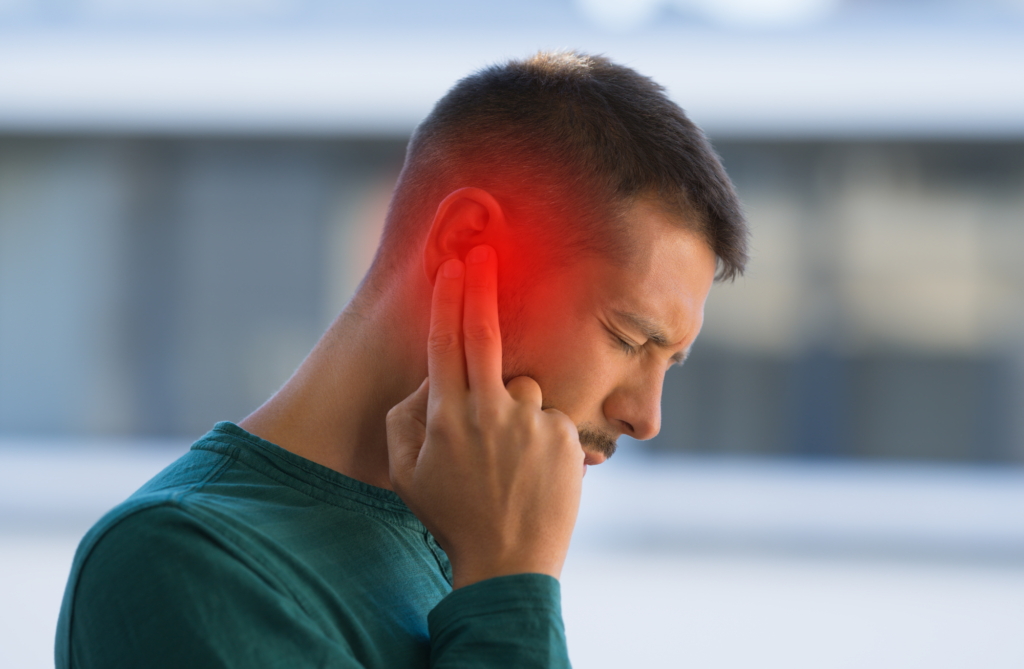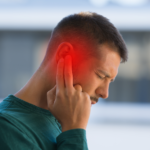The substance we call earwax, or cerumen, is actually a natural product made by glands found in the ear canal. It protects the ear by catching dust, dirt, and bacteria before they can reach the inner ear. While earwax buildup is common, especially among older adults, it can cause ear blockage, muffled hearing, and discomfort. Practising proper ear care and knowing when to seek professional help are key parts of maintaining healthy ear hygiene and hearing.
Understanding Ear Wax and Its Functions

Earwax plays a vital role in ear hygiene and protects the ear canal from irritation and infection. It acts as a natural cleaning and defence system. Knowing its purpose helps people care for their ears safely and maintain balanced ear care routines.
What is Ear Wax?
Earwax develops as ear glands combine their secretions with dead skin cells and dust, forming a layer that keeps the ear canal moist and comfortable. Proper ear care supports this natural barrier and helps prevent irritation or dryness.
Why Ear Wax is Important
Earwax supports healthy ears in several ways:
- Traps Dust and Debris: It filters dust, bacteria, and small particles, stopping them from reaching sensitive areas of the ear canal.
- Keeps Ears Moisturised: The wax provides gentle lubrication that stops the ear canal from drying out or becoming itchy.
- Protects Against Infection: It helps create a stable environment that discourages bacteria and fungi, keeping the ear canal clean and healthy.
Removing wax too often can make the ear more sensitive. Gentle ear care supports the body’s natural defences and promotes good ear hygiene.
Causes of Ear Wax Build-Up

Earwax buildup happens when wax is produced faster than it can move out of the ear canal naturally. Genetics, age, and daily habits can contribute to this. Understanding these causes helps prevent recurring ear blockage and discomfort.
Natural Production
Your ears naturally produce wax to stay protected. Some people have more wax or smaller ear canals, which can cause buildup. Keeping up with gentle ear care can help prevent problems.
Age-Related Factors
As people age, wax tends to become harder and drier. This makes it more likely to block the ear canal. The ear canal can also change shape, and the skin’s elasticity weakens as we age, all of which can contribute to a greater buildup of earwax. Older adults and hearing aid users often face more ear canal cleaning challenges and should follow reliable ear care practices.
At-Home Removal Attempts
Incorrect cleaning can make ear blockage worse. Cotton swabs, hairpins, or fingers may push wax deeper. Using ear cleaning tips, such as applying ear drops for wax, is a safer way to clear it.
Skin Conditions and Health Factors
Eczema, psoriasis, or hormonal changes like pregnancy or menopause can thicken or increase wax. Regular ear care and ear drops for wax can help maintain comfort and cleanliness.
Symptoms of Ear Wax Build Up

Recognising symptoms of earwax build-up helps avoid long-term problems. Many people ignore mild hearing loss or fullness in the ear until it becomes a significant ear blockage.
Hearing-Related Symptoms
When wax blocks the ear canal, sound cannot travel clearly to the eardrum:
- Reduced or Temporary Hearing Loss: Sound becomes muted as wax prevents vibrations from reaching the eardrum.
- Muffled or Distorted Sounds: Words and noises can sound dull or unclear, especially in busy environments.
- Difficulty Understanding Speech: Conversations become harder to follow when background noise is present.
If these problems persist, professional ear canal cleaning or ear irrigation may be necessary.
Ear Sensations
A blocked ear may feel full, tight, or itchy. Mild pain or discomfort can accompany these sensations, signalling that earwax buildup is affecting normal ear function.
Additional Signs
Other signs of ear blockage include:
- Ringing or Buzzing (Tinnitus): A humming or ringing sound can occur when wax presses on the eardrum or ear canal walls.
- Dizziness or Balance Issues: The inner ear’s balance may be affected, leading to unsteadiness or light-headedness.
- Cough Triggered by Pressure: Pressure on nerves in the ear canal can create a cough reflex or throat tickle.
- Headaches from Pressure: Built-up wax can cause a sense of heaviness or dull pain around the head.
Treatment Options for Ear Wax

Managing earwax buildup correctly helps maintain comfort and hearing clarity. Treatments vary depending on how much wax has accumulated. Consistent ear care supports healthy ears and balanced ear hygiene.
Softening the Wax at Home
Mild build-ups can often be eased with ear drops for wax or natural oils like olive or almond oil. These soften the wax so it can leave the ear naturally. Using a few drops for several nights can help, but it’s important to avoid excessive cleaning.
Professional Ear Cleaning
When wax becomes impacted, professional ear canal cleaning is recommended. Common treatments include:
- Microsuction: A small suction device gently removes wax while the audiologist watches through a microscope. It is quick and comfortable for most people.
- Ear Irrigation: Warm water is used to flush the ear canal after the wax has been softened, clearing even stubborn build-up safely.
- Manual Extraction: This method uses specialised, fine instruments like a curette or forceps to physically lift and remove hard or stubborn wax.
All methods are performed by trained specialists and are safe forms of ear care.
What to Avoid
It’s important to remember that items like cotton swabs or bobby pins should never be inserted into the ear canal. They can push wax deeper into the ear and cause damage to the inside of the ear. Over-cleaning removes protective oils, which can lead to irritation. Following professional ear cleaning tips keeps ear care safe and effective.
Consulting a Professional
If blockage or pain continues, a doctor or audiologist should be consulted. People with perforated eardrums or chronic ear infections should always choose professional ear canal cleaning for healthy ear hygiene.
When to See a Doctor

Mild wax build-up can often be managed at home, but some symptoms need professional ear care. Acting early helps prevent infection and long-term hearing issues.
Warning Signs
Contact a doctor if you notice:
- Ear Pain or Discomfort: Persistent or sharp pain may indicate infection or severe blockage requiring medical treatment.
- Fluid or Unusual Discharge: Pus or clear discharge can suggest infection or a ruptured eardrum and needs immediate attention.
- Tinnitus or Sudden Hearing Loss: Continuous ringing or sudden hearing loss may result from wax pressing against the eardrum.
You need to contact the doctor immediately if you are experiencing any of these symptoms.
High-Risk Situations
Those with a history of ear surgery, eardrum perforation, or chronic ear conditions should avoid home treatments. Regular ear irrigation and guidance from an audiologist help maintain good ear hygiene and prevent complications.
Preventing Future Ear Wax Problems

Healthy habits help prevent earwax buildup and ear blockage. Gentle, regular ear care keeps ears comfortable and hearing sharp.
Safe Ear Care Practices
To maintain healthy ears:
- Avoid Inserting Objects: Do not put fingers, cotton swabs, or other tools into your ears, as these can cause damage or push wax deeper.
- Use Ear Drops as Needed: Use ear drops for wax if you often have a build-up. They soften wax and allow natural removal.
- Follow Expert Cleaning Advice: Trust professional ear cleaning tips for methods that protect the ear canal without causing irritation.
Simple, consistent ear care helps maintain long-term ear hygiene.
Lifestyle and Protective Measures
Environment and lifestyle choices affect ear health. Keeping ears protected from dust, water, and loud noises supports good hearing. Older adults and hearing aid users benefit from routine ear canal cleaning to prevent ear blockage and discomfort.
Professional Earwax Removal at NeuroHearing

At NeuroHearing, experienced audiologists offer safe, gentle ear canal cleaning to relieve discomfort and restore hearing. Our personalised ear care services focus on comfort and long-term results.
How We Help
At NeuroHearing, we provide earwax removal for adults experiencing blocked ears or hearing problems. Our team uses microsuction, ear irrigation, and manual extraction to carefully remove wax while maintaining healthy ear hygiene.
Our Approach
We use modern, evidence-based methods and personalised ear cleaning tips for every patient. Our Canterbury clinic provides advanced tools for comfortable ear canal cleaning.
Why Choose Us
Our caring professionals offer efficient service and lasting results. Through expert ear care and guidance, we help patients enjoy clearer hearing and maintain lifelong ear hygiene.
Conclusion
Earwax buildup is a natural protective process, but too much can lead to ear blockage, discomfort, or hearing problems. Knowing the causes, recognising the signs, and using safe ear cleaning tips help maintain healthy hearing. Simple home methods like ear drops for wax can help mild cases, while professional ear canal cleaning or ear irrigation is ideal for tougher blockages. Consistent ear care and good ear hygiene promote long-term ear health and comfort.
If you have blocked ears or changes in hearing, contact us at NeuroHearing for professional ear canal cleaning and expert ear care. Our audiologists are ready to help restore your hearing with safe, caring support.
Frequently Asked Questions (FAQs)
Is excessive earwax a symptom of anything?
- Excessive earwax can indicate overproduction, skin problems, or impaction. Regular ear care and professional ear canal cleaning help manage this safely.
What is the main reason for earwax?
- Earwax forms to trap dirt and bacteria while keeping the ear canal lubricated. Maintaining consistent ear hygiene supports this natural protection.
Why do I have so much earwax while pregnant?
- Hormonal changes during pregnancy can increase wax production. Using mild ear drops for wax or professional ear irrigation helps manage buildup safely.
Can earwax cause headaches?
- Yes. Pressure from earwax buildup or ear blockage can cause mild headaches or dizziness. Regular ear care helps reduce these symptoms.
What are the symptoms of earwax build-up?
- Common signs include muffled hearing, fullness, tinnitus, dizziness, earache, or coughing. These often suggest earwax buildup that needs professional ear canal cleaning.











